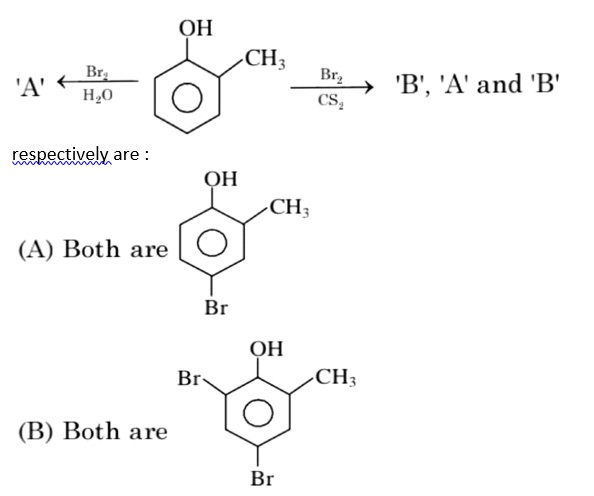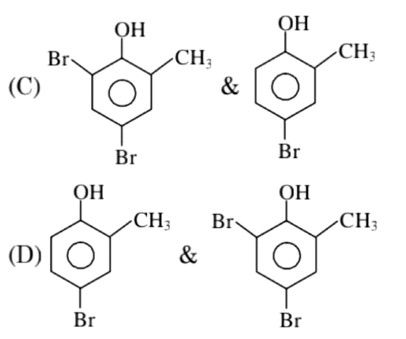Match the complex ions given in Column I with the colours given in Column II and assign the correct code
Column I (Complex ion)
Column II (Colour)
A. [Co(NH3)6]3+
1. Violet
B. [Ti(H2O)6]3+
2. Green
C. [Ni(H2O)6]2+
3. Pale blue
D. [Ni(H2O)4(en]2+ (aq)
4. Yellowish orange
5. Blue
Code
(i) A (1) B (2) C (4) D (5)
(ii) A (4) B (3) C (2) D (1)
(iii) A (3) B (2) C (4) D (1)
(iv) A (4) B (1) C (2) D (3)
Match the complex ions given in Column I with the colours given in Column II and assign the correct code
|
Column I (Complex ion) |
Column II (Colour) |
|
A. [Co(NH3)6]3+ |
1. Violet |
|
B. [Ti(H2O)6]3+ |
2. Green |
|
C. [Ni(H2O)6]2+ |
3. Pale blue |
|
D. [Ni(H2O)4(en]2+ (aq) |
4. Yellowish orange |
|
5. Blue
|
Code
(i) A (1) B (2) C (4) D (5)
(ii) A (4) B (3) C (2) D (1)
(iii) A (3) B (2) C (4) D (1)
(iv) A (4) B (1) C (2) D (3)
-
1 Answer
-
This is a Matching Type Questions as classified in NCERT Exemplar
Ans: Correct option: (ii)
Similar Questions for you
CoCl3.NH3 + AgNO3
x = 5
In H2O (polar solvent) dibromophenol derivative and in CS2 (non-polar solvent moneobromo phenol derivate is obtained.
3d => 4d => 5d CFSE increases for the same ligands.
Factual
⇒ leaching methods is used for those metal in which metal is more soluble than impurities and these are Al, Au, Ag, low grade Cu
σ bonded organometallic compound ⇒ M – C
σ-bond
and in π – bonded organo metallic compound
M – C
π bond
In ferrocene, there is π-bond
Taking an Exam? Selecting a College?
Get authentic answers from experts, students and alumni that you won't find anywhere else
Sign Up on ShikshaOn Shiksha, get access to
- 65k Colleges
- 1.2k Exams
- 679k Reviews
- 1800k Answers



